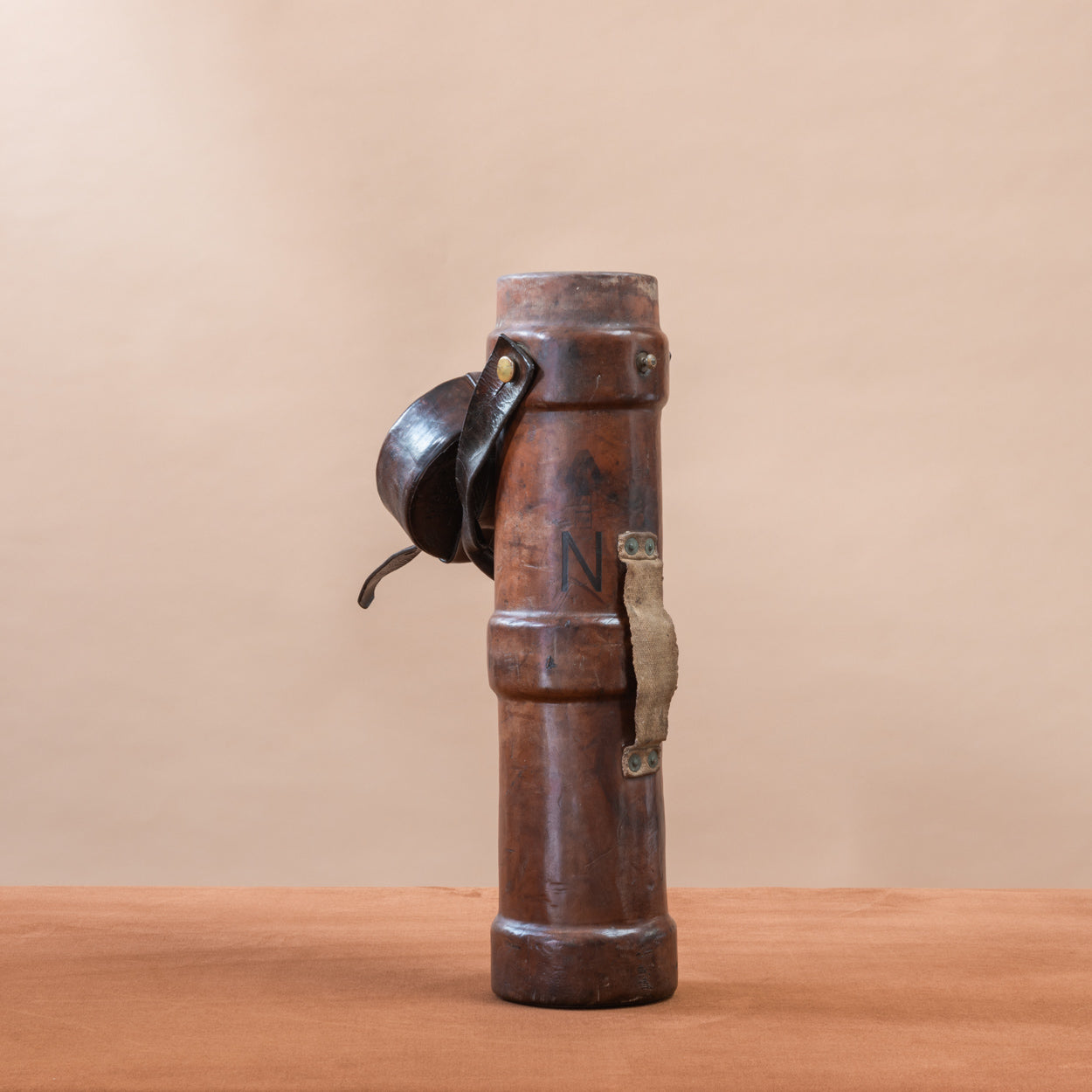
Philips' Celestial Globe
- Regular price
- £3,900.00
- Sale price
- £3,900.00
- Regular price
-
- Unit price
- /per
Adding product to your basket
A stylish celestial globe on a brass inclined plain mount attached to original square bakelite base and secured at the top by a brass acorn finial. By George Philip and Son; circa 1935. A cartouche is present that includes the title and maker's address.
The globe is printed in beige against a dark background and shows the constellations and many named stars. Fine lines connect the stars within constellations rather than illustrating them as mythological and other figures.
When looking at the stars from Earth the viewpoint is effectively inside a celestial sphere. The surface of a celestial globe shows the star field as a projection viewed from the outside and is therefore reversed, with the constellations appearing as their mirror images.
Dimensions: 30.5 cm/12 inches (diameter) x 41.25 cm/16¼ inches (max. height).
George Philip, (1800–1882) was a cartographer and map publisher. He founded George Philip & Sons in 1834 in Liverpool primarily as a bookseller and stationer, but rapidly expanding to become a publisher of primarily maps, atlases and educational works. He had one son, also George (1823–1902), who was admitted to the business in 1848.
George senior was born in Huntly, Aberdeenshire and by 1819 he had become assistant to the Liverpool bookseller, William Grapel before going on to start his own business. He used cartographers (such as John Bartholomew the elder, August Petermann, and William Hughes) to produce maps on copper plates.
Philip then had these printed and hand-coloured by his women tinters. The business expanded rapidly and by the time he produced his county maps of 1862 he was using machine coloured maps produced on power-driven lithographic presses.
Philips’ production of globes in the 19th century was mainly limited to associations with other British globe makers, including Smith & Sons, London, but in 1902 Philip ventured into the production of globes as a manufacturer, facilitated by the firm’s establishment of the London Geographical Institute, a large factory for map, atlas, and globe production.
Globes from this era are generally constructed by forming a sphere made either of card or fibreboard covered by gesso (plaster) to ensure smoothness. The sphere was then overlaid with a map printed on long, thin elliptical strips of paper that narrow to a point at the North and South Poles.
Over the years, Philip acquired the production lines of other British globe makers including Malby, Betts, Smith and Johnston. The firm also supplied atlases and textbooks overseas starting with an atlas for Australian schools in 1865 and for New Zealand in 1869. The demand from board schools, established after 1870, enabled further expansion in the market for globes, atlases and wall maps.
DELIVERY
For online purchases exceeding £100 we currently offer free worldwide shipping.
RETURNS
We offer a 14 day to return policy.
If you wish to return or exchange an item please contact our London store at +44 (0)20 7584 7770 or by e-mail at shop@bentleyslondon.com
All returns should be sent back to us unused, in the original packaging provided with any tags still attached.
For full details of delivery and returns click here
You may also like
-
12 x 60 Military Binoculars
![]() 12 x 60 Military Binoculars20TH_CENTURYALUMINIUMlarge_binoculars_and_telescopeslatest_arrivalsmilitaryWOOD
12 x 60 Military Binoculars20TH_CENTURYALUMINIUMlarge_binoculars_and_telescopeslatest_arrivalsmilitaryWOOD- Regular price
- £12,800.00
- Sale price
- £12,800.00
- Regular price
-
- Unit price
- /per
Sale Sold -
Liqueur/Schnapps Drinks Set
![]()
 Liqueur/Schnapps Drinks Set19TH_CENTURY20TH_CENTURYboxesboxes_and_framesGLASS_AND_CRYSTALlatest_arrivalstrunksWOOD
Liqueur/Schnapps Drinks Set19TH_CENTURY20TH_CENTURYboxesboxes_and_framesGLASS_AND_CRYSTALlatest_arrivalstrunksWOOD- Regular price
- £12,000.00
- Sale price
- £12,000.00
- Regular price
-
- Unit price
- /per
Sale Sold -
Louis Vuitton Monogram Hat Trunk
![]()
 Louis Vuitton Monogram Hat Trunk20TH_CENTURYbranded_luggagebrassCANVASlatest_arrivalsLEATHERlouis_vuittonmonogrammonogram-N.G.P.monogram-N.P.monogram-NGPmonogram-NPtrunksVintage_Louis_VuittonVintage_luggage
Louis Vuitton Monogram Hat Trunk20TH_CENTURYbranded_luggagebrassCANVASlatest_arrivalsLEATHERlouis_vuittonmonogrammonogram-N.G.P.monogram-N.P.monogram-NGPmonogram-NPtrunksVintage_Louis_VuittonVintage_luggage- Regular price
- £26,000.00
- Sale price
- £26,000.00
- Regular price
-
- Unit price
- /per
Sale Sold -
Leather Cordite Carrier
![]()
 Leather Cordite CarrierCANVASFurniturelatest_arrivalsLEATHERmilitaryvintage_leather
Leather Cordite CarrierCANVASFurniturelatest_arrivalsLEATHERmilitaryvintage_leather- Regular price
- £3,900.00
- Sale price
- £3,900.00
- Regular price
-
- Unit price
- /per
Sale Sold -
Small Leather Cordite Carrier
![]()
 Small Leather Cordite Carrier20TH_CENTURYCANVASFurnitureLEATHERmilitaryvintage_leather
Small Leather Cordite Carrier20TH_CENTURYCANVASFurnitureLEATHERmilitaryvintage_leather- Regular price
- £1,600.00
- Sale price
- £1,600.00
- Regular price
-
- Unit price
- /per
Sale Sold














